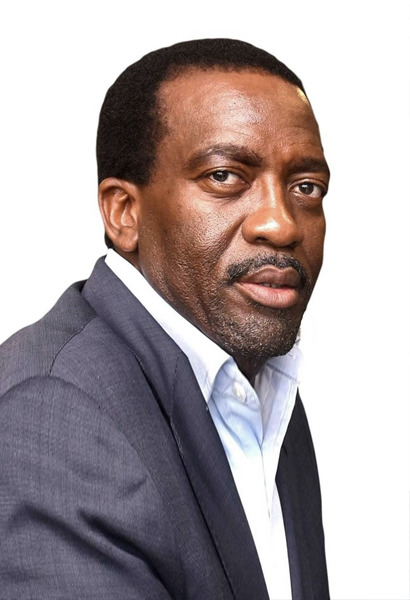
By Fabian de Beer, Chief Risk Officer, Mergence Investment Managers
The Finance Minister presented the 2024 Budget last week within the most challenging and difficult economic and socio-political environment, possibly since 1994. He had to strive for a delicate balance, tackling difficult fiscal choices after more than a decade of low growth. Given weak growth in the economy over the 2023/24 fiscal year, there was a substantial decline in gross tax revenue.
Some of the ongoing fiscal challenges include revenue coming in lower than expected, increasing pressure for public sector wage adjustments, and the escalating costs of servicing government debt.
The latter is putting a brake on the economy and public finances, as one out of every five rands of revenue is estimated to go towards servicing fiscal debt. As a result National Treasury has reduced its growth outlook, influenced also by a subdued global economic environment, high local interest rates, ongoing power cuts, transportation problems (port, rail, road and related infrastructure), bailouts of State-owned enterprises, and municipal failures. Real GDP growth is now projected at 0.6% for 2023, followed by a marginal pick-up to 1.3% in 2024 and 1.6% in 2025.
The economy has been subject to many headwinds, many self-inflicted, and desperately needs higher growth. Better economic growth – assuming an improved and more supportive environment – is important for the sustainability and growth of businesses, stimulating job creation, and thus enabling an environment that raises the potential for the state to collect higher tax revenues. In light of the prevailing tough environment and pressing priorities and constraints, not much was announced in the Budget to set the economy on an improved growth trajectory; rather, effectively dealing with and managing the current situation to ensure fiscal consolidation and stability weighed heavily. Significant investment is required for faster growth and job creation, the bulk of which investment will need to come from the private sector.
To beef up government resources given the situation, National Treasury resorted to the immediate utilisation (on a measured basis) of the gold and foreign exchange contingency reserve account (GFECRA) with the South African Reserve Bank. GFECRA financing coupled with no adjustment to bracket creep (see below) and increases in sin taxes will help to offset other revenue shortfalls and higher spending.
This, especially GFERCA, will bolster government’s coffers and is expected to reduce its borrowing requirement. As a result, the fiscal situation would improve versus expectations. National Treasury has maintained government’s budget deficit forecast at 4.9% of GDP for the 2023/24 fiscal year, narrowing further to 4.5% in 2024/25. Gross debt to GDP is now projected to stabilise at 75.3% in 2025/26, down from the November projection of 77.7%.
The Budget should likely be reassuring to investors and credit rating agencies, especially those who presumed a populist Budget ahead of the upcoming elections. It should also calm the market which largely anticipated persistent and further fiscal slippage.
We did not hear about tax increases as many have feared. However, there is one aspect of the Budget that may easily go unnoticed, and which is tantamount to an increase in personal tax by stealth. This stems essentially from the decision not to adjust personal tax brackets upwards for inflation to compensate for the effects of “bracket creep”, which occurs as an inflationary increase in people’s income moves them up to a higher tax bracket.
This results in an effective increase in personal tax rates. Nonetheless, the additional R15bn in tax this is expected to raise is marginal and estimated to be no more than 0.7% of budgeted revenue. Furthermore, its negative impact on economic spending is deemed to be very modest, especially when considering the fuel levy which was not increased in line with inflation and thus provides tax relief to the tune of R4bn.
National Treasury estimates indicate that South Africa has 7.1m individual taxpayers, a decline from the 7.4m a year before, yet has about four times as many people receiving grants. Furthermore, around 74% of all personal tax is contributed by those earning over R500,000 per annum and a massive ca 30% from those earning upwards of R1.5m.
With a number of other factors (e.g. volatility and cyclicality of our mining company earnings and thus tax payments), this underscores the fact that the economy urgently needs to be set on a footing towards higher-trend growth to broaden the tax base as this state of affairs is unsustainable. Structural changes and the removal of impediments for a higher economic growth environment become just as pressing as fixing the power, transport and incipient water crises.
Infrastructure allocations were largely maintained. However, growth in infrastructure spending will slow down fairly rapidly. Transport and logistics, energy and water and sanitation were the focus and dominated the infrastructure allocation.
A budget allocation of R1.4bn was made to the proposed National Health Insurance (NHI) scheme. This is deemed a token of the government’s promise to introduce such a scheme to help the poor. This corroborates the State of the Nation address where the NHI scheme process was signalled to be incremental.
The Minister earmarked long-term tax reforms – particularly the two-pot retirement system and the minimum corporate tax rate – to be implemented in 2024/25. The two-pot retirement system will come into effect on 1 September 2024. It is estimated that R5bn will likely be raised in 2024/25 from the tax collected as and when retirement fund members utilise once-off withdrawals.
All in all, the Minister is to be commended for presenting a measured Budget notwithstanding some very challenging constraints in a difficult environment.
For more of our blogs, please visit our website.








































